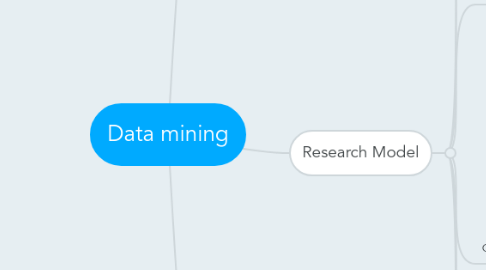
1. Research Problem
1.1. Classification
1.2. Prediction
1.3. Clustering
1.4. Association Rule
2. Research Model
2.1. Association Rule
2.1.1. Apriori
2.1.2. Partition
2.1.3. DHP
2.1.4. MSApriori
2.1.5. FP-Growth
2.2. Decision Tree
2.2.1. Numerical
2.2.1.1. CART
2.2.1.2. C 4.5
2.2.2. Catogorical
2.2.2.1. CART
2.2.2.2. C 4.5
2.2.2.3. CHAID
2.3. Neural Network
2.3.1. Signal- transfer network
2.3.2. State-transfer network
2.3.3. Competitive learning /Self-organizing network
2.4. Cluster Analysis
2.4.1. Distance-based clustering
2.4.1.1. Hierarchical clustering
2.4.1.1.1. Single linkage method
2.4.1.1.2. Complete linkage method
2.4.1.1.3. Average linkage method
2.4.1.1.4. Centroid linkage method
2.4.1.1.5. Ward's method
2.4.1.1.6. BIRCH
2.4.1.1.7. CURE
2.4.1.2. Partitional clustering
2.4.1.2.1. K-means method
2.4.1.2.2. K-mode
2.4.1.2.3. K-mediods method
2.4.2. Density-based clustering
2.4.2.1. DBSCAN
2.5. Bayesian networks
2.6. Rough Set Theory
2.7. Multivariate Statistical Analysis
2.7.1. Multiple regression analysis
2.7.2. Discriminant analysis
2.7.3. Logistic regression analysis
2.7.4. Principal Component Analysis
2.7.5. Factor analysis
2.8. Time Series Analysis
2.8.1. Moving average, MA
2.8.2. Auto-correlation, AR
2.8.3. Autotregressive Integrated Moving Average model, ARIMA model
